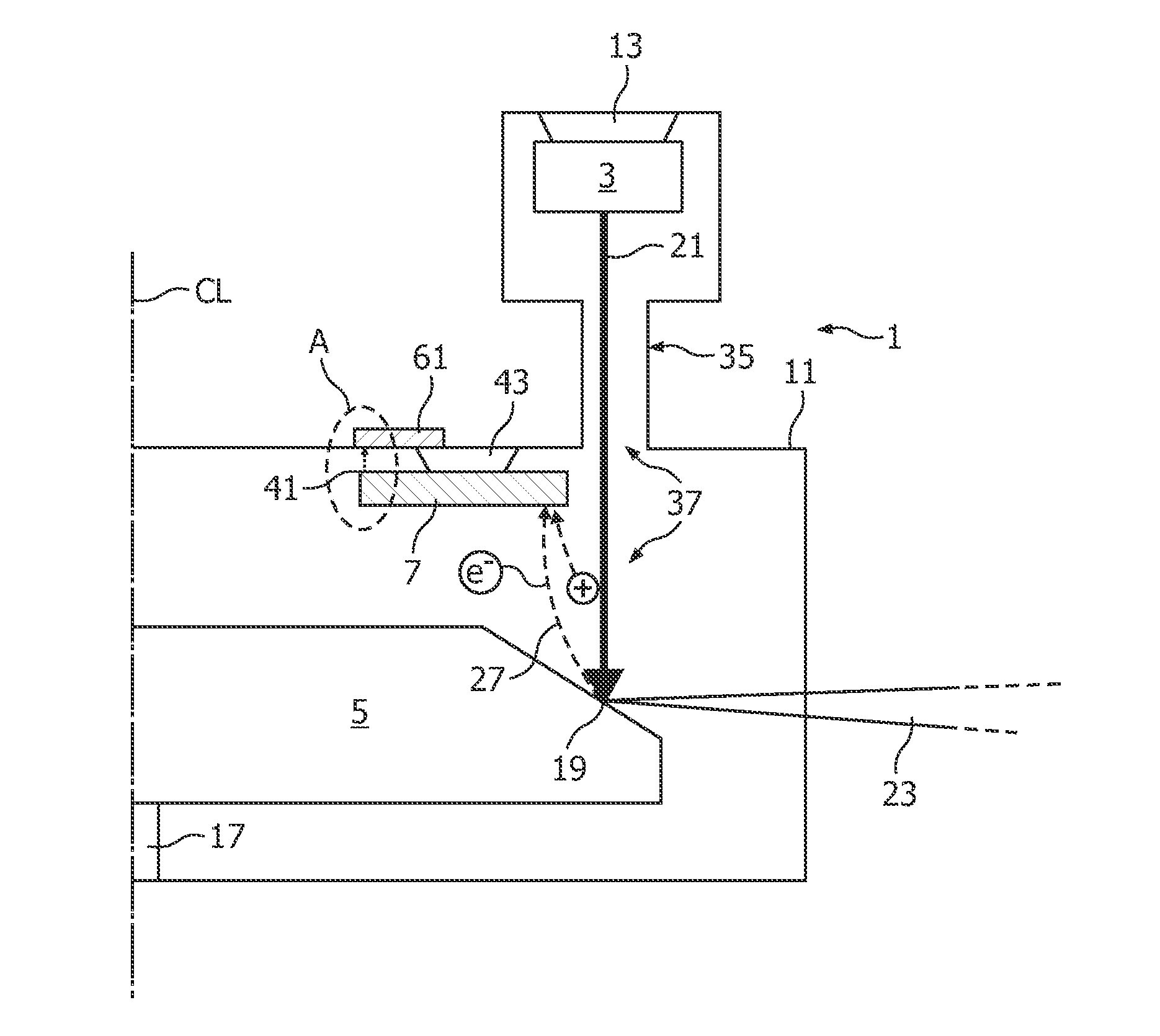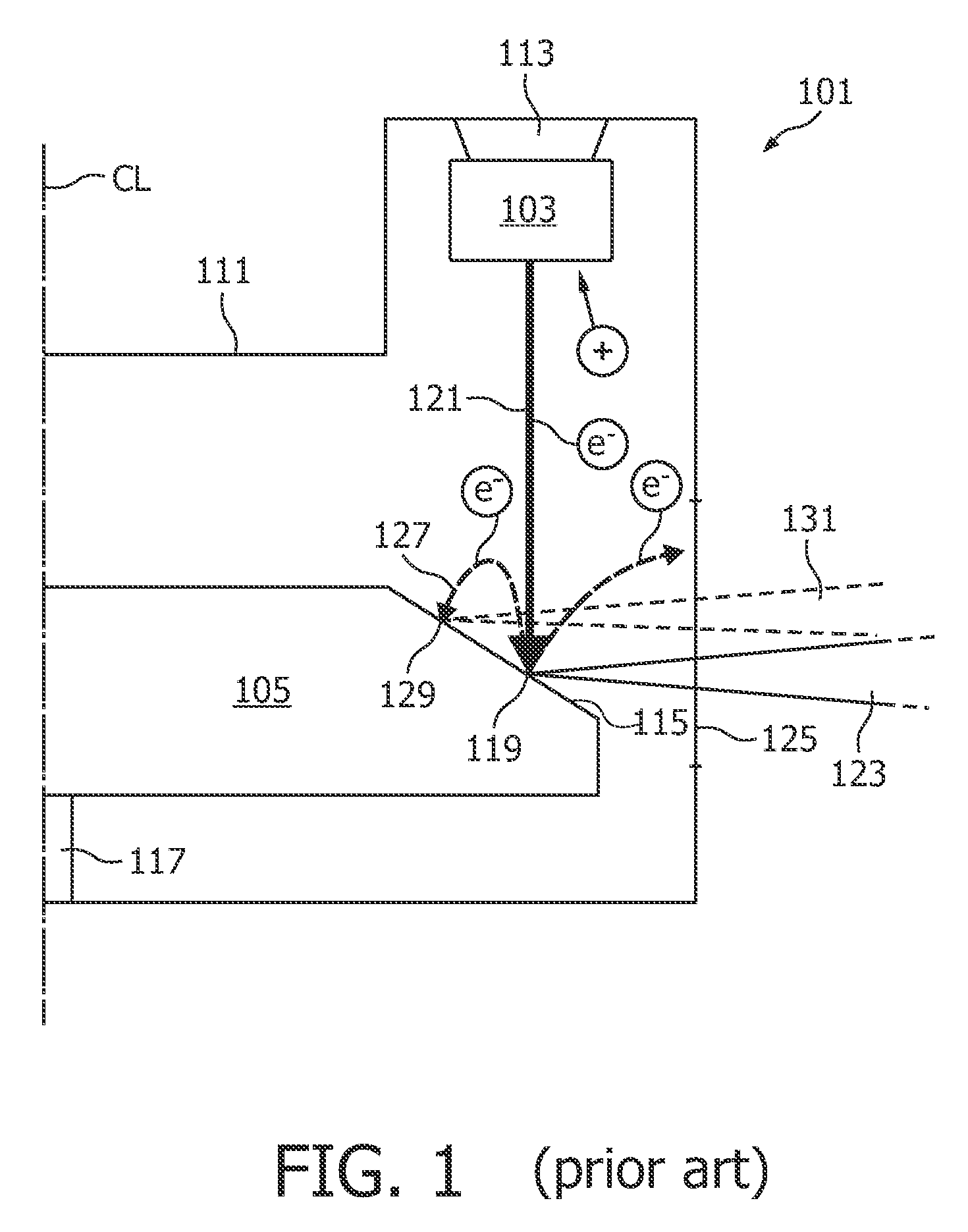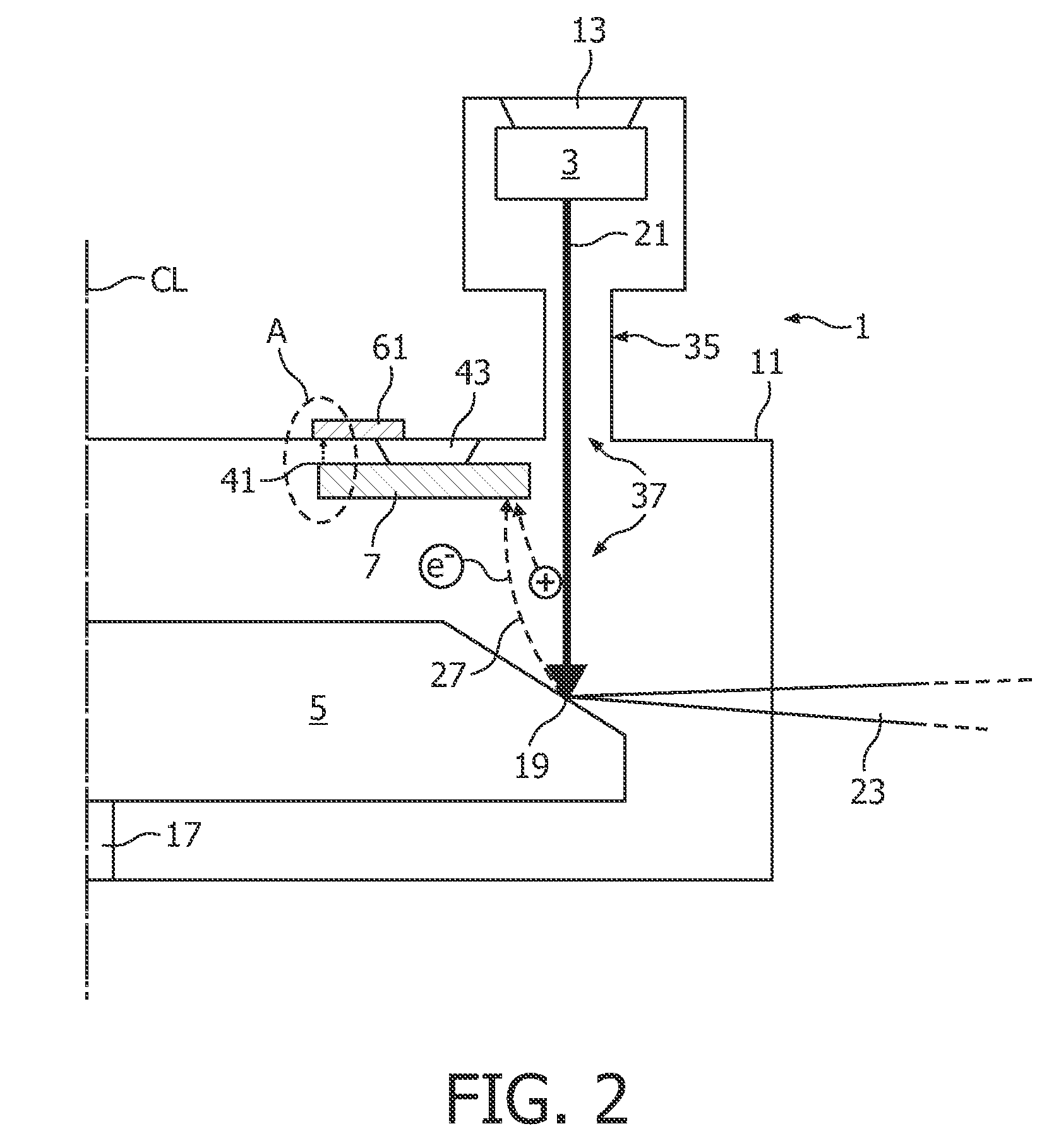X-ray tube with passive ion collecting electrode
a technology of ion collecting electrode and x-ray tube, which is applied in the direction of x-ray tube vessel/container, electrical apparatus, electric discharge tube, etc., can solve the problems of unfavorable off-focal radiation, de-stabilizing the focusing, and ions may no longer experience a strong electric pull field, so as to reduce manufacturing and maintenance costs and ensure the effect of safety
- Summary
- Abstract
- Description
- Claims
- Application Information
AI Technical Summary
Benefits of technology
Problems solved by technology
Method used
Image
Examples
Embodiment Construction
[0041]FIG. 1 shows a conventional X-ray tube 101 comprising as main components a cathode 103 and an anode 105. The components of the X-ray tube 101 are enclosed by a housing 111. The cathode 103 is set to a highly negative potential of for example −120 kV and is mechanically attached to the housing 111 by an electrically insulating element 113 such that the cathode 103 is electrically isolated against the housing 111. The anode 105 is designed as round disk which can be rotated around a rotation axis 117. The anode 105 comprises a slanted surface 115. Electrons (e−) of a primary electron beam 121 emitted from the cathode 103 and accelerated towards the anode 105 impact onto the anode 105 in a focal point 119 on the slanted surface 115.
[0042]Upon such impact of electrons, a portion of approximately 60% of the electron beam 121 directed onto the anode 105 serves for generating a beam of X-rays 123. This beam of X-rays 123 can be transmitted through a window 125 within the housing 111 ...
PUM
 Login to View More
Login to View More Abstract
Description
Claims
Application Information
 Login to View More
Login to View More - R&D
- Intellectual Property
- Life Sciences
- Materials
- Tech Scout
- Unparalleled Data Quality
- Higher Quality Content
- 60% Fewer Hallucinations
Browse by: Latest US Patents, China's latest patents, Technical Efficacy Thesaurus, Application Domain, Technology Topic, Popular Technical Reports.
© 2025 PatSnap. All rights reserved.Legal|Privacy policy|Modern Slavery Act Transparency Statement|Sitemap|About US| Contact US: help@patsnap.com



